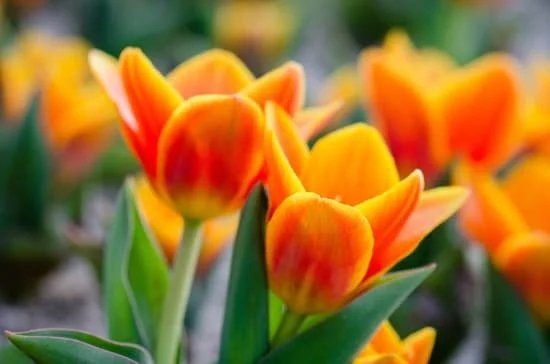Container vegetable gardening ideas are a great way to grow your own fresh produce, even if you don’t have a lot of outdoor space. In this article, we will explore the various aspects of container vegetable gardening, from choosing the right containers and selecting the best vegetables to essential tools and supplies needed for successful gardening.
Container gardening has become increasingly popular in recent years, as it offers flexibility and convenience for urban dwellers or those with limited outdoor space. Whether you have a small balcony, patio, or even just a sunny windowsill, you can create your own vibrant vegetable garden in containers.
In the upcoming sections, we will discuss everything you need to know to start your own container vegetable garden, from selecting the right containers and vegetables to maintenance tips and creative design ideas. So whether you’re an experienced gardener looking to try something new or a beginner with limited space, this guide will provide all the information you need for a successful container vegetable garden.
Choosing the Right Containers for Your Vegetable Garden
When it comes to container vegetable gardening ideas, choosing the right containers is crucial for the success of your garden. The type and size of the container will have a significant impact on the growth and health of your vegetables. Here are some tips for selecting the best containers for your vegetable garden:
1. Consider the Material: There are various materials available for containers, including plastic, terracotta, wood, and fabric. Each material has its advantages and disadvantages. For example, plastic containers are lightweight and retain moisture well, while terracotta pots are porous and allow air circulation to the roots.
2. Size Matters: The size of the container will depend on the type of vegetable you want to grow. Larger vegetables like tomatoes and peppers will require bigger containers with a depth of at least 12 inches, while smaller plants like lettuce and herbs can thrive in shallower pots.
3. Drainage is Key: Proper drainage is essential for container gardening to prevent waterlogging and root rot. Look for containers with drainage holes at the bottom or be prepared to drill them yourself if necessary.
4. Vertical Options: If space is limited, consider using vertical containers or hanging baskets to maximize your growing area without taking up valuable floor space.
By carefully selecting the right containers for your vegetable garden, you can create an ideal environment for your plants to thrive and produce a bountiful harvest throughout the growing season.
Selecting the Best Vegetables for Container Gardening
When it comes to selecting the best vegetables for container gardening, there are a few factors to consider. Some vegetables are better suited for growing in containers due to their size, growth habits, and adaptability to small spaces. Additionally, certain varieties of vegetables are more conducive to the confined environment of a container garden.
Factors to Consider
When choosing which vegetables to grow in your container garden, it’s important to consider the space available, the amount of sunlight the area receives, and your personal preferences. Some vegetables thrive in containers with limited space, while others require more room to spread out. Additionally, certain vegetables may be more forgiving if you’re new to container gardening.
Best Vegetables for Container Gardening
Some of the best vegetables for container gardening include tomatoes, peppers, lettuce, spinach, radishes, green onions, and herbs such as basil and parsley. These vegetables are well-suited for growing in containers due to their compact size or shallow root systems. They also tend to adapt well to being grown in smaller spaces and can thrive with the right care and maintenance.
Considerations for Success
In order to have a successful container vegetable garden, it’s important to choose varieties that are specifically bred for small spaces or have compact growth habits. Additionally, pay attention to the recommended spacing requirements for each vegetable and avoid overcrowding your containers. By selecting the best vegetables for container gardening and providing them with proper care, you can enjoy a bountiful harvest from your own urban oasis.
Essential Tools and Supplies for Successful Container Gardening
When it comes to container vegetable gardening ideas, having the right tools and supplies is essential for a successful harvest. The first and most important item on your list should be the containers themselves. Choosing the right size and material for your containers is crucial, as it will directly impact the growth of your vegetables. Plastic, ceramic, and wood are popular choices, each with its own set of advantages and disadvantages.
In addition to the containers, you will also need a good quality potting soil mix that is specifically formulated for container gardening. This type of soil provides the proper drainage and aeration that your vegetables need to thrive. Along with soil, fertilizer is another essential supply for container gardening. Consider using a slow-release organic fertilizer to provide your plants with the nutrients they need over an extended period of time.
Another important tool for successful container gardening is a watering can or hose with a gentle spray nozzle attachment. Proper watering is critical for container-grown vegetables, as they can dry out more quickly than plants in traditional garden beds. Mulch, plant supports (such as stakes or cages), and hand tools like trowels and pruners are also essential supplies to have on hand for maintaining your container vegetable garden throughout the growing season.
Finally, consider investing in some basic pest control products such as insecticidal soap or organic pesticides to protect your vegetable garden from common pests and diseases that can affect container-grown plants.
| Tool/Supply | Importance |
|---|---|
| Containers | Critical for plant growth |
| Potting Soil Mix | Provides proper drainage and aeration |
| Fertilizer | Nutrient source for plants |
| Watering Can/Hose | To ensure proper hydration of plants |
Tips for Proper Soil and Fertilizer Selection
When it comes to container vegetable gardening, the proper soil and fertilizer selection is crucial for the success of your garden. The right balance of nutrients and good soil structure will ensure that your vegetables thrive in their confined environment. Here are some tips for ensuring that you provide the best growing medium for your container garden.
Choosing the Right Soil
One of the most important aspects of successful container vegetable gardening is choosing the right soil. Look for a high-quality potting mix that is specifically formulated for container gardening. These mixes provide good drainage and aeration, which are essential for healthy root growth. Avoid using regular garden soil, as it tends to be too heavy and can lead to poor drainage in containers.
Understanding Fertilizer Needs
In addition to selecting the right soil, a proper fertilizer regimen is also essential for container vegetable gardening. Since container plants have limited access to nutrients in the surrounding soil, they rely heavily on fertilizers for their nutritional needs. Look for a balanced, all-purpose fertilizer that contains essential macro and micronutrients. It’s important to follow the recommended dosage on the fertilizer label to avoid over-fertilizing, which can damage your plants.
Organic Options
For those looking to go the organic route with their container vegetable gardening, there are plenty of organic soil mixes and fertilizers available on the market. These products are made from natural ingredients and are free from synthetic chemicals, making them safe for growing edible crops. Keep in mind that organic options may be pricier than conventional ones, but they offer the benefit of promoting sustainable and environmentally-friendly gardening practices.
By paying attention to proper soil and fertilizer selection, you can set your container vegetable garden up for success from the very beginning, ultimately leading to bountiful harvests of fresh produce throughout the growing season.
Design and Layout Ideas for Container Vegetable Gardens
When it comes to designing and laying out your container vegetable garden, there are numerous creative ideas that can help you maximize space, improve aesthetics, and promote better growth for your vegetables. Here are some inspiring design and layout ideas for your container vegetable gardens:
1. Vertical Gardening: Utilizing vertical space can significantly increase the square footage of your garden. You can use trellises, wall-mounted planters, or hanging baskets to grow vining vegetables such as tomatoes, cucumbers, and beans.
2. Companion Planting: Implementing companion planting in your container vegetable garden not only maximizes space but also promotes natural pest control and enhances the flavor of certain vegetables. For example, planting carrots with onions or garlic can help repel carrot flies and aphids.
3. Colorful Containers: Adding a pop of color to your garden with vibrant containers can create an attractive focal point on your patio or balcony. Consider using different sizes and shapes of containers to add visual interest to your vegetable garden.
In addition to these design ideas, it’s also important to consider the layout of your containers for proper sunlight exposure and efficient watering. By arranging taller plants at the back and shorter ones in the front, you can ensure that all plants receive adequate sunlight. Similarly, grouping together containers with similar water requirements can make watering more convenient.
With these design and layout ideas, you can create a visually appealing and productive container vegetable garden that meets both practical and aesthetic needs. Whether you have limited space or simply want to enhance the beauty of your outdoor area, implementing these ideas will undoubtedly elevate your container vegetable gardening experience.
Maintenance and Care for Your Container Vegetable Garden
Maintaining and caring for your container vegetable garden is essential to ensure healthy and thriving plants. Regular maintenance tasks include watering, fertilizing, pest control, and monitoring for any signs of disease or nutrient deficiencies.
Watering is crucial for container vegetable gardening, as the soil in containers tends to dry out faster than traditional garden beds. It’s important to check the moisture levels in the soil regularly and water as needed. A good rule of thumb is to water when the top inch of soil feels dry to the touch. Using a self-watering container or adding a layer of mulch on top of the soil can also help retain moisture.
In addition to proper watering, container vegetables also require regular feeding with fertilizer to provide them with essential nutrients for growth and fruit production. Choose a balanced liquid fertilizer or slow-release granular fertilizer specifically formulated for vegetables, and follow the instructions on the package for application frequency and dosage.
Keep an eye out for common pests like aphids, caterpillars, and snails that can damage your plants. Consider using natural methods like hand-picking or introducing beneficial insects to control pest populations without harming your vegetables.
Regularly inspect your container vegetables for any signs of disease such as mold, rot, or yellowing leaves. Promptly address any issues by removing affected plant parts and applying organic fungicides or treatments if necessary. By staying vigilant with maintenance and care, you can ensure a bountiful harvest from your container vegetable garden.
Overall, maintaining a thriving container vegetable garden requires dedication and attention to detail. By providing proper care through watering, fertilizing, pest control, and disease management, you can enjoy a beautiful and productive container garden filled with fresh homegrown produce.
Creative Ways to Display and Arrange Your Container Vegetable Garden
When it comes to container vegetable gardening, there are countless creative ways to display and arrange your garden that can add beauty and functionality to any space. One popular idea is to use vertical gardening techniques, such as trellises or hanging baskets, to maximize the use of space. This not only adds visual interest to your garden, but also allows for more efficient growth of vining vegetables like tomatoes, cucumbers, and beans.
Another creative way to arrange your container vegetable garden is by incorporating different types of containers and structures. Mix and match traditional pots with unique containers like old barrels, crates, or even repurposed furniture to add a unique touch to your garden. You can also create raised bed planters using wood or other materials for a more structured and organized look.
Consider arranging your containers in visually appealing patterns or groupings. For example, you can create a “container garden wall” by arranging pots of varying sizes on shelves or racks against a wall or fence. Alternatively, you can arrange your containers in a circular pattern around a central focal point, such as a small fountain or sculpture.
Overall, the key to creatively displaying and arranging your container vegetable garden is to think outside the box and let your imagination run wild. By incorporating vertical gardening techniques, mixing different types of containers, and arranging them in visually appealing patterns or groupings, you can create a truly unique and beautiful vegetable garden that will be a joy to tend throughout the growing season.
Solutions for Common Container Gardening Problems
Container vegetable gardening can be a rewarding and enjoyable way to grow your own fresh produce, but like any form of gardening, it comes with its own set of challenges. Common container gardening problems include issues such as inadequate drainage, pest infestations, and dealing with limited root space for certain vegetable plants. Fortunately, there are several solutions that can help you overcome these challenges and ensure the success of your container garden.
One common problem that many container gardeners face is poor drainage in their containers, which can lead to waterlogged soil and root rot. To solve this issue, make sure to choose containers with adequate drainage holes at the bottom. Additionally, placing a layer of small rocks or gravel at the bottom of the container before adding the soil can improve drainage. Ensuring proper watering techniques – allowing excess water to drain out – is also crucial in preventing water-related issues.
Pest infestations can also pose a challenge for container vegetable gardens. To address this problem, consider incorporating natural pest control methods such as companion planting or introducing beneficial insects like ladybugs or lacewings to your garden. Regularly inspecting your plants for signs of pests and taking appropriate action early on can help prevent infestations from getting out of control.
Another common problem in container vegetable gardening is dealing with limited root space for certain vegetables that have deep root systems, such as carrots or potatoes. One solution to this issue is using deeper containers specifically designed for growing root vegetables.
Alternatively, choosing compact or miniature varieties of these vegetables can also help mitigate the impact of limited root space. By being attentive to these common issues and implementing these solutions, you can enjoy a successful and bountiful container vegetable garden.
How to Extend Your Container Vegetable Gardening Season
Container vegetable gardening is a versatile and convenient way to grow your own produce, even if you have limited space. By utilizing the right containers, selecting the best vegetables, and maintaining proper care, you can enjoy a bountiful garden right at your fingertips. However, as the seasons change, it’s important to consider how to extend your container vegetable gardening season to continue reaping the rewards of your hard work.
One way to extend your container vegetable gardening season is by utilizing protective coverings such as row covers or cold frames. These structures can provide insulation and protection from harsh elements, allowing you to continue growing certain vegetables well into the cooler months. Additionally, consider investing in portable greenhouse options that can be easily moved and provide a controlled environment for your plants.
Another method to prolong your container vegetable gardening season is by choosing cold-tolerant varieties of vegetables that are more resilient to lower temperatures. Vegetables like kale, spinach, carrots, and lettuce can thrive in cooler weather and are perfect for extending your harvest well into fall and even winter.
Lastly, don’t forget about the importance of proper maintenance and care during the changing seasons. Regularly check on soil moisture levels, adjust watering schedules accordingly, and be vigilant against pests and diseases that may become more prevalent in cooler temperatures.
By staying proactive and attentive to your container vegetable garden’s needs, you can successfully extend your growing season and continue enjoying fresh produce for longer periods of time. With these tips in mind, you can confidently navigate through changing seasons while maximizing your container vegetable gardening efforts.
Frequently Asked Questions
What Vegetables Grow Well Together in a Container?
When growing vegetables in a container, it’s important to consider companion planting. For example, pairing tomatoes and basil is beneficial as the basil repels pests that can harm the tomatoes. Similarly, carrots and onions grow well together as they have different root depths, minimizing competition for nutrients.
What Vegetables Are Good to Grow in Containers?
Many vegetables thrive in containers, including tomatoes, peppers, lettuce, spinach, radishes, and green onions. These vegetables don’t require a lot of space to grow and can be easily maintained in a container garden. Additionally, herbs like parsley, cilantro, and mint also do well in containers.
What Is the Best Container for a Vegetable Garden?
The best containers for a vegetable garden are those that provide adequate drainage and enough space for the plants’ roots to grow. Options include plastic pots, wooden crates, or ceramic planters.
However, regardless of the material used, it’s essential that the container is large enough to accommodate the specific vegetable being grown and has proper drainage holes to prevent waterlogging.

Welcome to my gardening blog! I am passionate about plants and enjoy sharing my knowledge and experiences with others. In this blog, I will write about everything related to gardening, from tips on how to get started to updates on my own garden projects.





